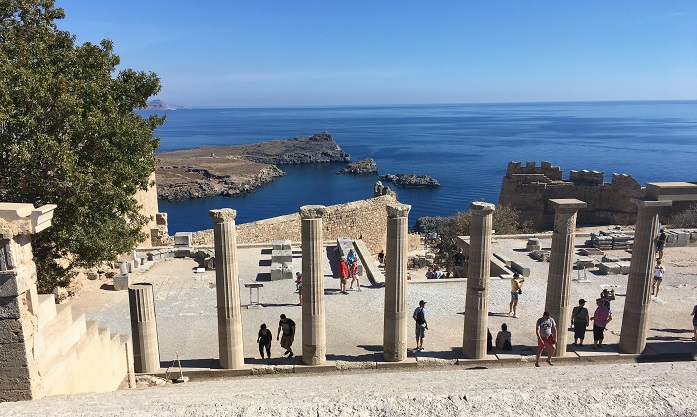
The lovely Classical remnants of the Lindos acropolis hover like a dream on the rocky cliffs high above the deep blue Aegean Sea. Come climb these layers of history with Thor and me.
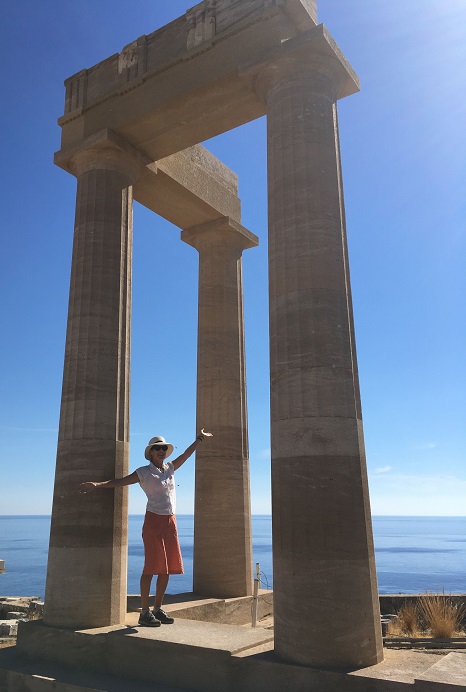
NOTE: Since our trip last fall to Greece to research more settings for my novel-in-progress, THE ARIADNE DISCONNECT, Thor and I knew we had to return to this magical region. My first entry in this new blog series posted here on Saturday, 10/20/2018. It gives an overview of our rambles from Athens to seven islands in the Dodecanese and Cyclades groups, ending our ferry-hopping pilgrimage on the anciently sacred island of Delos.
Thor and I woke up to a sunny morning over the Charaki cove, where some hardy Brits were taking a pre-breakfast swim. Since we’d enjoyed a brisk swim there before dinner the night before, we decided to explore other beaches after a morning visit to the Lindos acropolis. We had explored this magical site the previous year, but it’s one of those special places that call you back for more. As we rounded a turn on the east coast highway above the sea, Lindos appeared below us, whitewashed houses of the traditional village at the foot of the rocky outcrop gleaming in the sun:
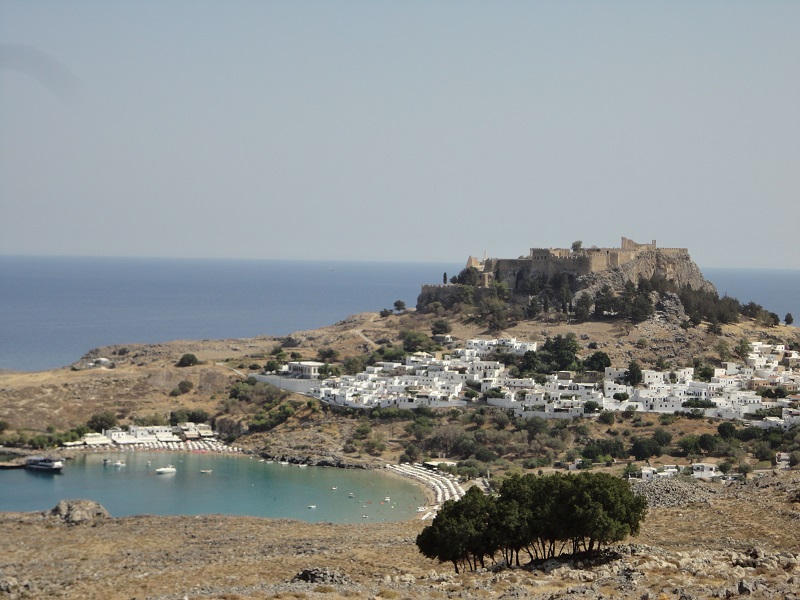
Lawrence Durrell, in his memoir of the post-World War II years on the island, Reflections on a Marine Venus, gives us his first impression: “Lindos, under the sweetness of its decoration, is like a trumpet-call, beaten out in gold-leaf and vibrating across the blue airs of time.” And of the traditional village clustered around the acropolis: “Its beauty is of a scrupulous Aegean order, and perfect in its kind. The narrow streets which rise and fall like music are paved with clean sea-pebbles, and criss-crossed with little inter-communicating alleys. Their width is enough to accommodate two mules abreast, but no car can enter them. Everything is painted white, a dazzling glitter of plaster and white-wash, so that if you half closed your eyes you might imagine that Lindos reflected back the snowy reflections of a passing cloud.”
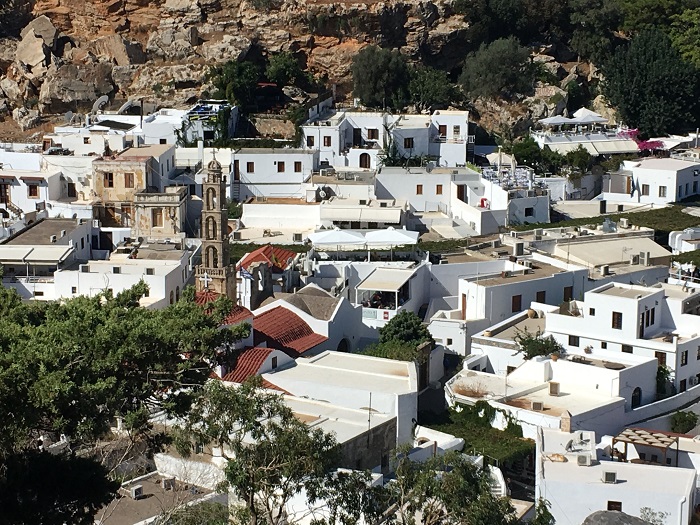
Black-and-white pebble mosaics–choklakia–pave the narrow lanes and decorate courtyards:
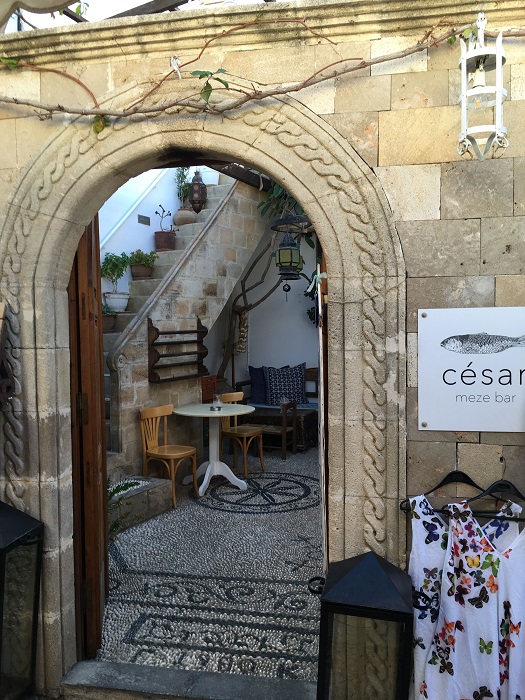
As everywhere in Greece, the site is layered with ancient and modern history. Minoan remains have been found in the area, confirming early Cretan influence; the island offered good ports and a convenient stop on the way to Asia Minor. After the collapse of the Minoan civilization (1400-1500 B.C.), Rhodos became one of the independent island kingdoms in the late Bronze Age. Later it was occupied by the Dorians from mainland Greece, when the first temple with remaining columns was built on the acropolis around 400 BC. Lindos was one of three major Rhodian ports at that time, along with Ialysos and Kameiros, joining with the islands of Kos, Knidos, and Halikarnassos in the Dorian League to protect shipping interest in the area. The photo above shows one of the two naturally-protected harbors on either side of the Lindos acropolis–now mostly welcoming pleasure boats and bathers.
Lindos is one of the hottest spots (literally) on the island, but this year was cooler than our last visit, as Thor and I climbed the many stone steps to the Medieval gate of the acropolis. The same Knights of St. John who built the fortress in Rhodes Town added to the ancient walls with their own fortifications of this strategic site, around 1300 AD.
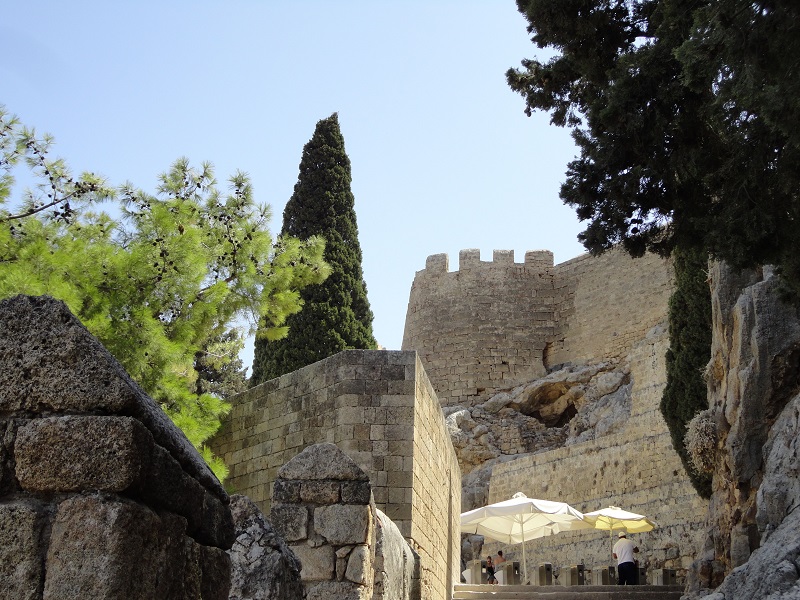
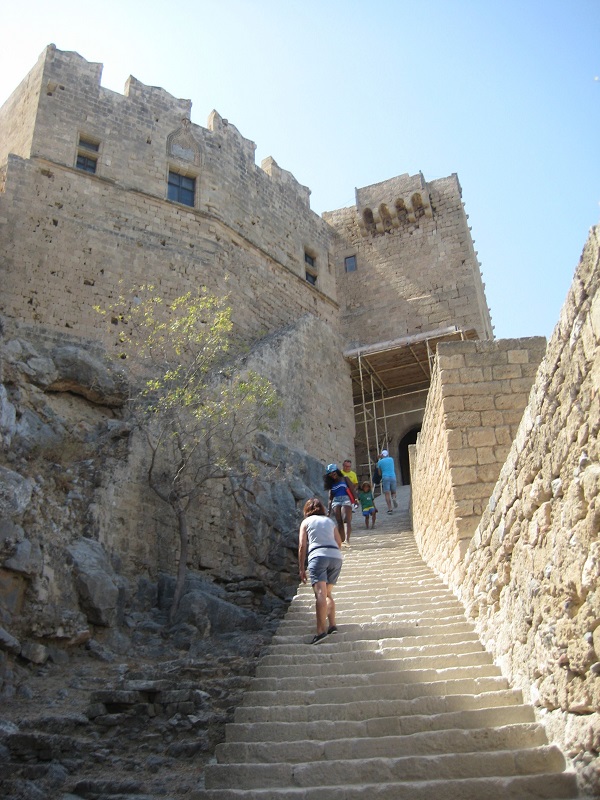
Still visible in the original rock wall beside the steps is this carved relief of a Rhodian Trireme (warship) from about 180 BC.
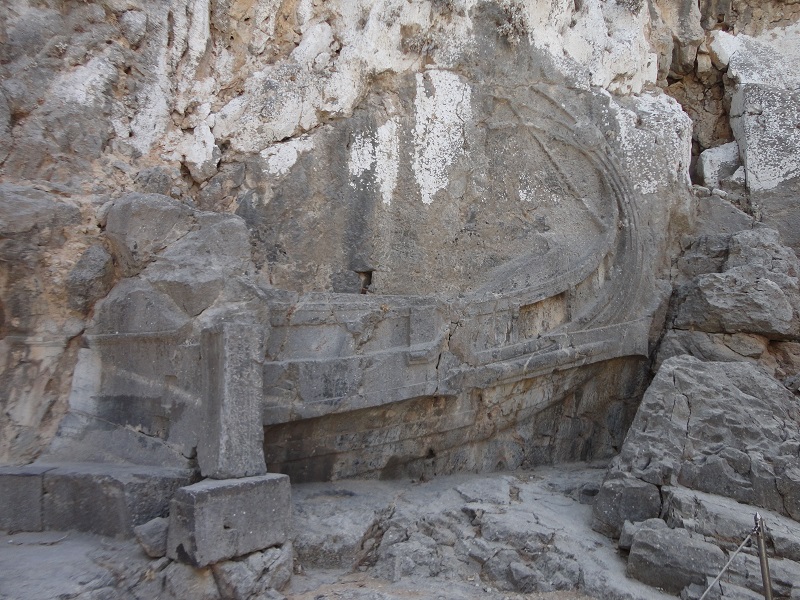
We entered at the top past the remains of the Medieval castle and the earlier Roman temple of Diocletian from the 3rd century AD:
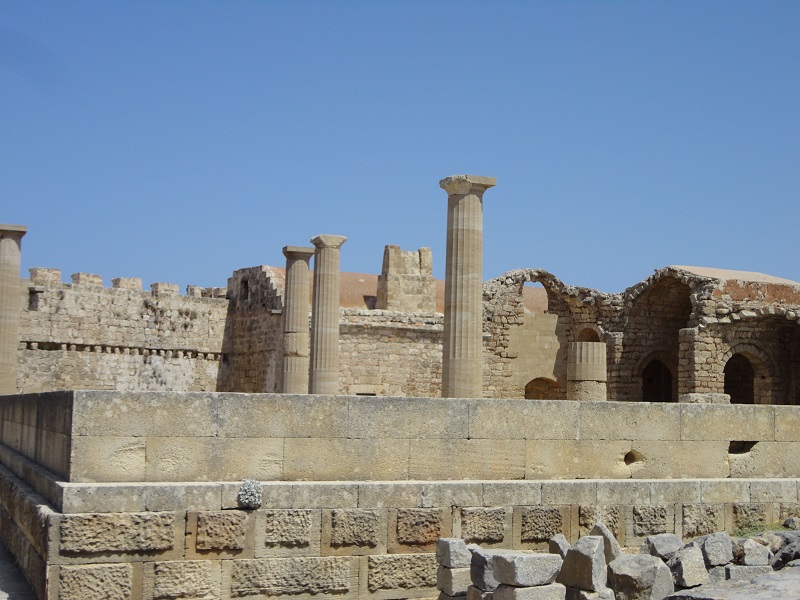
We proceeded to the staircase of the Propylea, a monumental gateway (similar to that on the Athens acropolis) in front of the Temple of Lindian Athena:
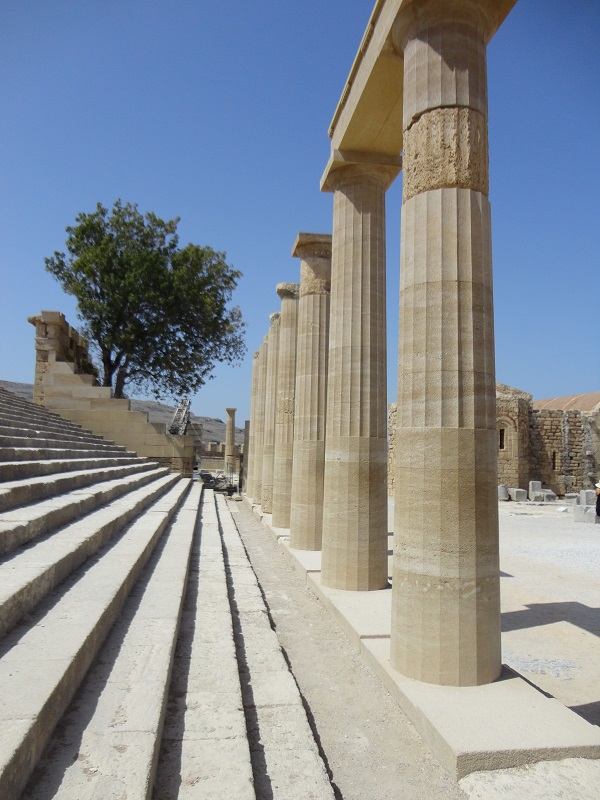
The Temple of Lindian Athena was a Doric construction from the 4th century BC:
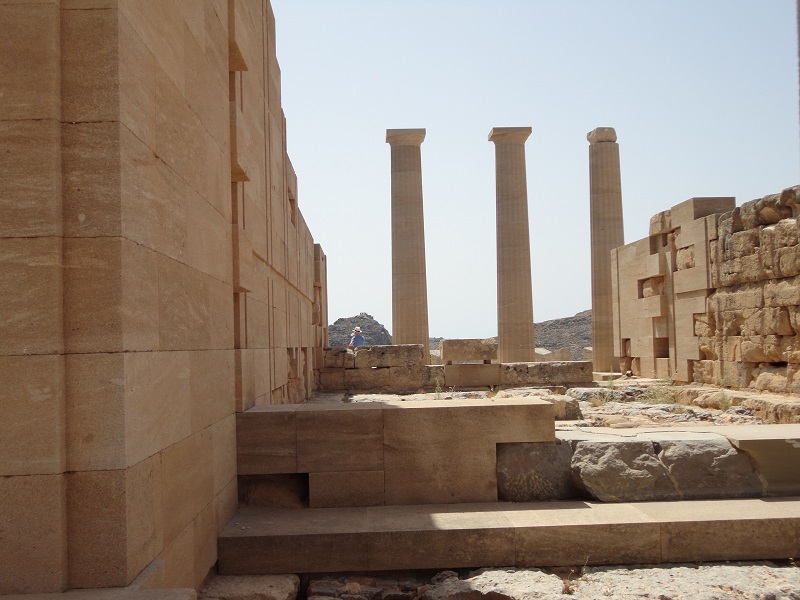


Below the steep cliff beside the temple, the second sheltered bay on the south side beckoned like a cool blue drink (exploring is thirsty work):
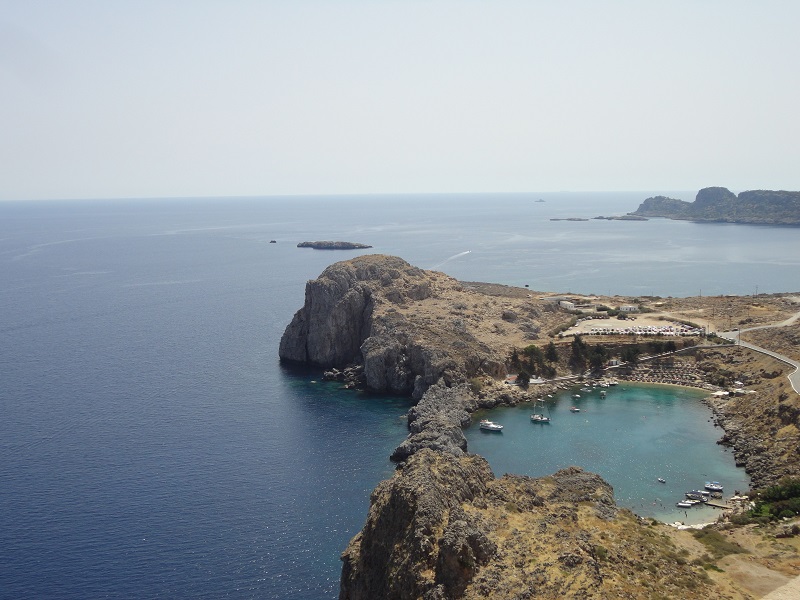
When I stood beside the remaining columns of the 200 B.C. Hellenistic stoa, the breathtaking beauty of this site merged with the geometric purity of design, all of it glowing in the sunlight that blended sky and sea, to transport me into the sort of exalted trance that must have inspired Durrell’s lyric descriptions:
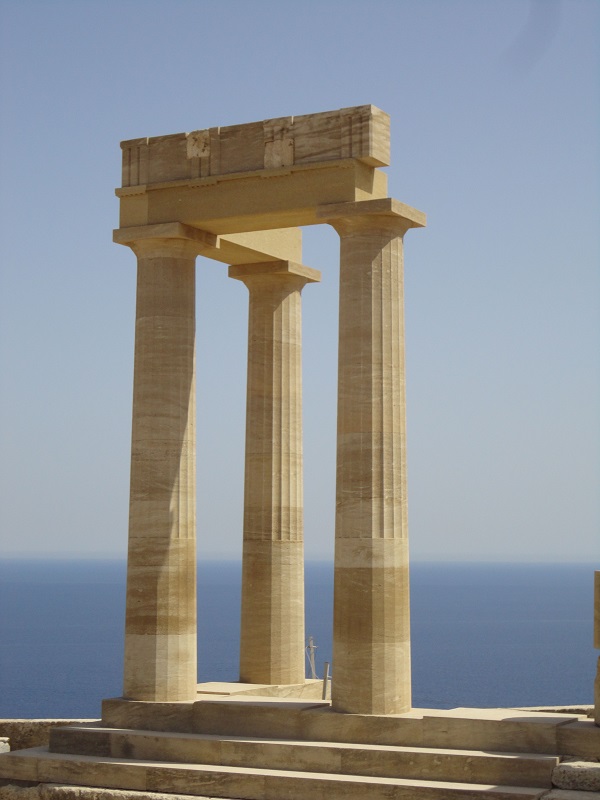
Snugged up against the Classical ruins are the Medieval, with the Greek Orthodox Church of St. John from the 13th or 14th century AD, atop the footings of a previous church built as early as the 6th century:
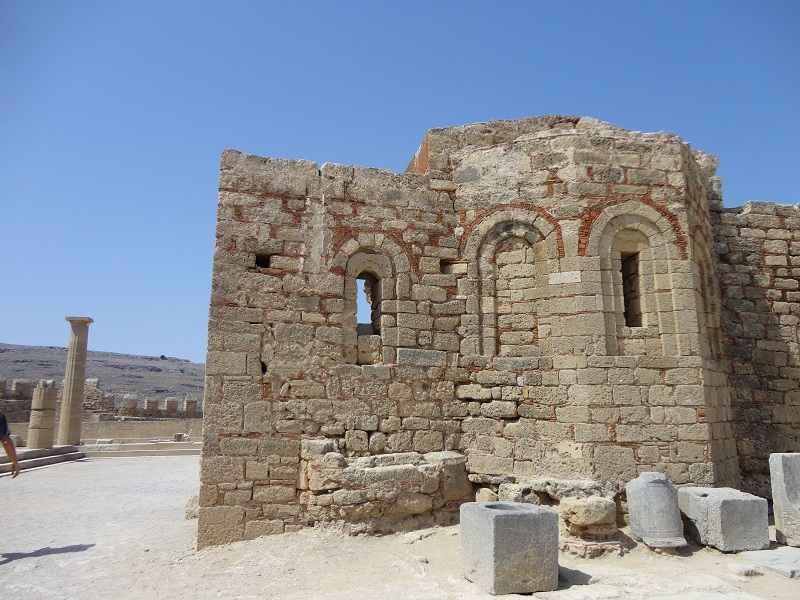
We found, tucked into a courtyard, one of the goddess Athena’s sacred olive trees:
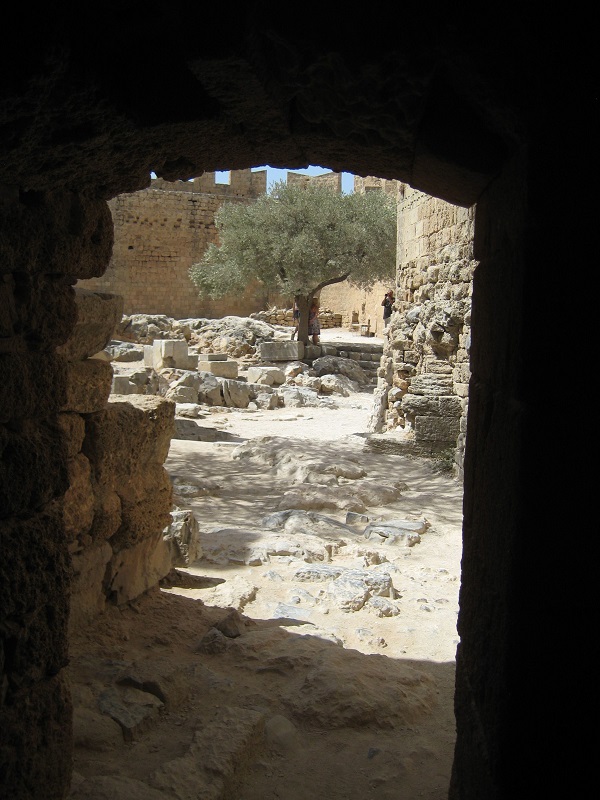
The benevolent tyrant Kleobolos, one of the Seven Sages of Greece, ruled the polis during the 6th century B.C., and is supposedly buried below the acropolis on the northern point of the bay (there is some dispute about that location). He is known for such sayings as “Ignorance and talkativeness bear the chief sway among men.” (Hmm, remind you of a certain ignorant Unreality-show celebrity turned presidential disaster?) Kleobolos would also remind him, “Nothing in excess.” The sage apparently also supported women’s involvement in public affairs, and his daughter was a famous poet of the time. Everything moves in cycles, it seems.
Another glimpse over the cliff to the cooling sea beckoned us for a swim. Like Peter Mitchell in my novel THE ARIADNE CONNECTION, I’m hypnotized by the clear beauty of the Aegean and Mediterrean Seas, and I can’t get enough of swimming and snorkeling in them: “He kicked hard, straight down into hushed shadow. The water split and reformed around him as he arrowed into it, sharp-edged as flowing crystal. It was bare underneath, too, rock outlined precise below him, not much in the way of fish or plants. Here and there a sparse weed curtsied in the swell, fingerlings scattering in a silver spurt of alarm. But the water: incredible clear blue like swimming in air, and the pure salt cool of it you could almost see forever stay forever, siren voices calling him deeper….”
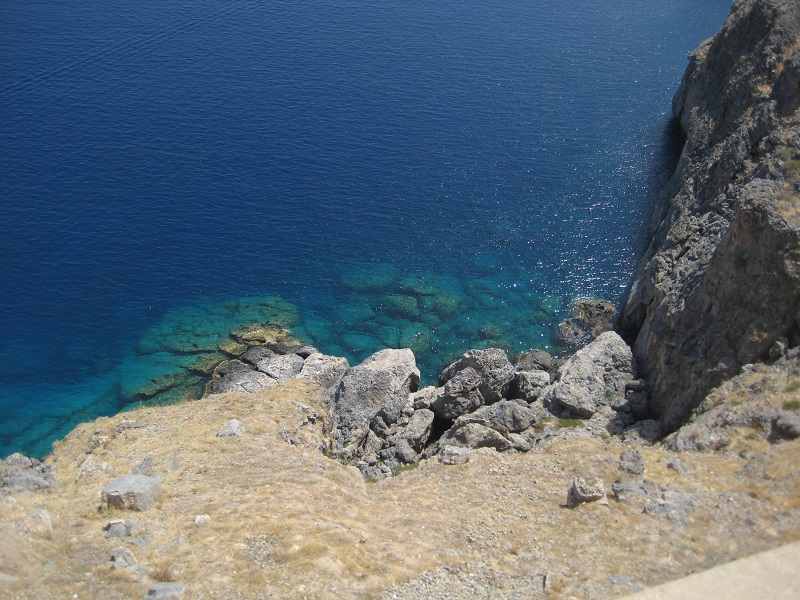
On the way down from the acropolis, we stopped to pet the donkeys waiting to give tourists a ride up:
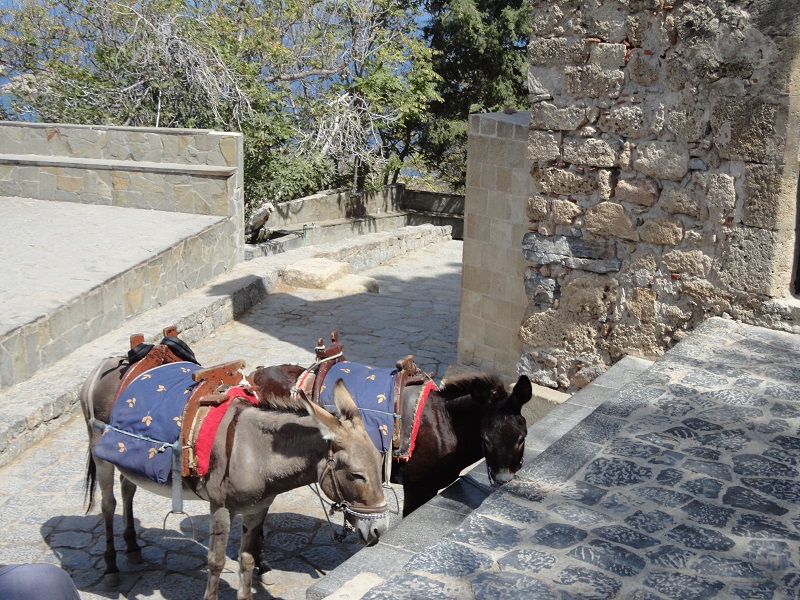
The donkeys are corralled in stone pens that make use of the caves in the hillside. In Greece, the ubiquitous caves are used for everything from animal stables to hermit-monk dwellings.
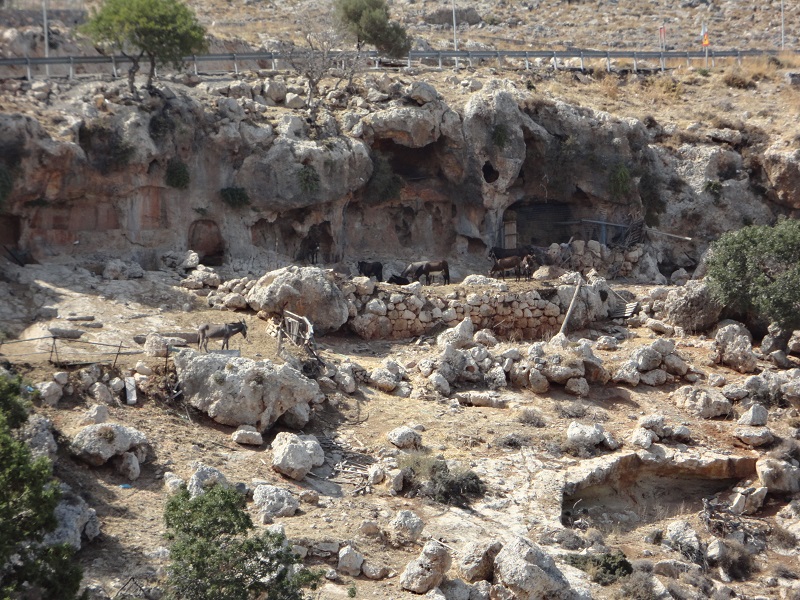
Entering or leaving the acropolis involves winding one’s way through the narrow labyrinths of the village lanes, apparently constructed to make it difficult for invaders. As Thor and I headed out, we passed some of the older houses that have doorways decorated with carvings. These traditional sea-captain houses, built between the 15th and 18th centuries AD, are called archontika. The carved chains are supposed to indicate how many ships the captain owned.
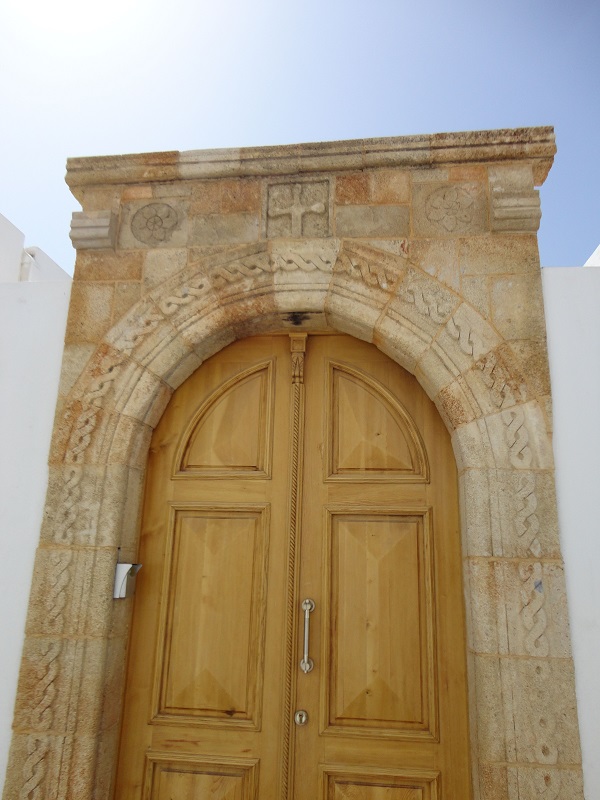
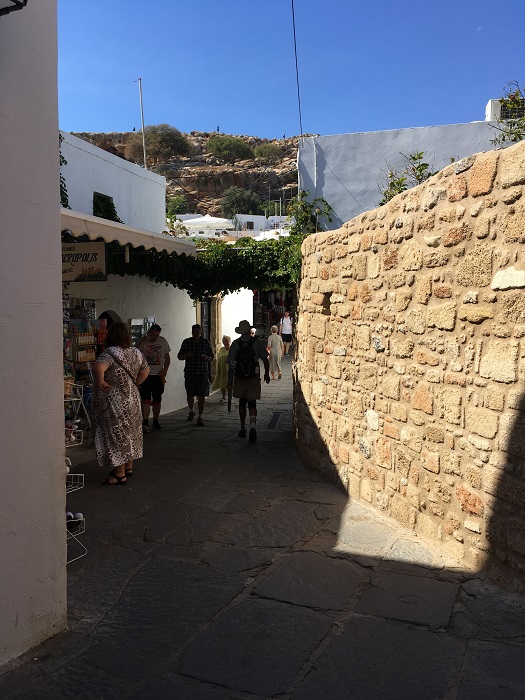
Following Ariadne’s mythical thread, we made our way out of the village labyrinth with one thought on our minds: Plunging into one of those cool blue coves we’d spotted from atop the acropolis. “Sto plaz!” To the beach!
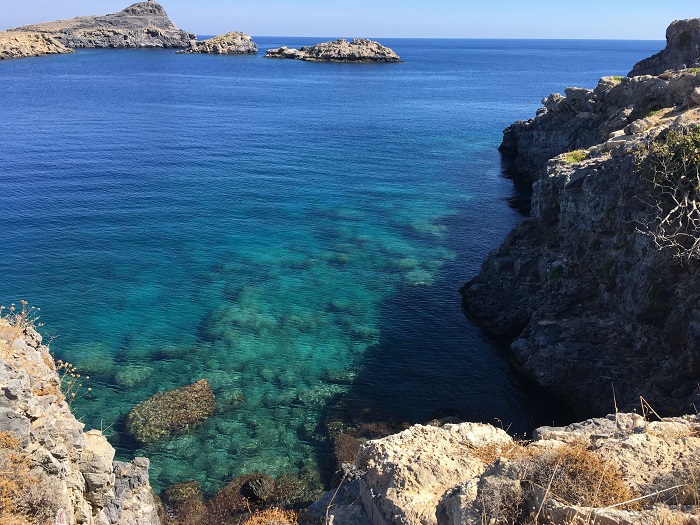
We had our masks and snorkels in our knapsacks, so we were ready for that blue magic once we’d hiked past the crowded tourist beach toward the rocky peninsula. We found a way down to a cove’s edge and slipped into the shimmering, clear sea. Schools of small blue fish scattered and reformed like living sapphires around us as we swam along the shoreline. Then I spotted a cave beneath the undercut cliff. We swam into the flickering shadows inside the grotto, floating in the buoyant hush, suspended in the spell of timeless mystery. “Chairete!” Rejoice!
*****

You will find The Rambling Writer’s blog posts here every Saturday. Sara’s latest novel from Book View Cafe is available in print and ebook: The Ariadne Connection. It’s a near-future thriller set in the Greek islands. “Technology triggers a deadly new plague. Can a healer find the cure?” The novel has received the Chanticleer Global Thriller Grand Prize and the Cygnus Award for Speculative Fiction. Sara has recently returned from another research trip in Greece and is back at work on the sequel, The Ariadne Disconnect. Sign up for her quarterly email newsletter at www.sarastamey.com

1 thought on “The Rambling Writer Explores More Greek Islands, Part 10: Ancient Lindos on Rhodes”